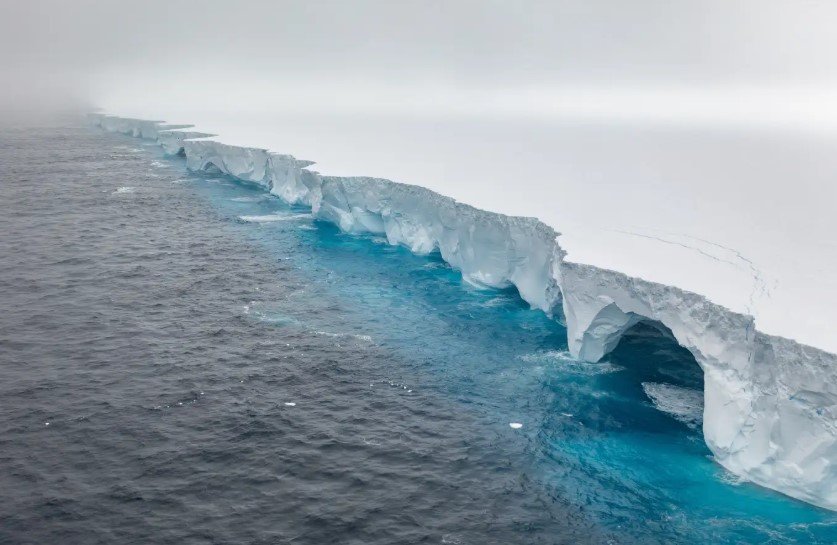The world’s biggest iceberg, A23a, has seemingly run aground approximately 70 kilometers (43 miles) from South Georgia island. Scientists are closely monitoring the situation, as the massive ice block may alter local ocean dynamics, with potential implications for the region’s wildlife and ecosystems.
A Titanic Ice Mass Stalls After Decades of Movement
After being lodged in place for more than 30 years, the iceberg A23a broke free from the Antarctic ice shelf in 2020. Since then, it has been drifting northward, its journey guided by ocean currents and winds. Now, its progress appears to have halted once again.
The iceberg spans an estimated 3,300 square kilometers (1,275 square miles), roughly the size of Rhode Island, and weighs close to a trillion tonnes. Given its massive scale, any change in its movement has the potential to impact surrounding oceanographic conditions significantly.
Andrew Meijers, an oceanographer at the British Antarctic Survey (BAS), has been tracking A23a using satellite imagery and expressed interest in what comes next. “It will be interesting to see what will happen now,” he said.

Wildlife on South Georgia May Dodge a Major Disruption
For months, scientists feared the iceberg might drift too close to South Georgia, a key habitat for penguins and seals. A23a’s presence in shallow waters could have disrupted feeding patterns, forcing these animals to travel much farther in search of food. This concern remains, but with the iceberg appearing to have settled at a distance, the immediate threat has somewhat diminished.
“If the iceberg stays grounded, we don’t expect it to significantly affect the local wildlife,” Meijers noted. However, if ocean currents shift it closer to the island, that could still present problems for breeding colonies.
An Uncertain Future for A23a
Despite appearing to be stuck for now, there is no guarantee that A23a will remain grounded permanently. Previous giant icebergs that took a similar route through the Southern Ocean eventually broke apart and melted as they drifted farther north into warmer waters.
Interestingly, a 19-kilometer-long (12-mile) section broke off from A23a in January. Scientists will be watching closely to see whether further fragmentation occurs, which could accelerate its disintegration and reduce any long-term impacts.
Could A23a Benefit the Ecosystem?
Not all potential consequences of A23a’s presence are negative. As icebergs melt, they release vital nutrients such as iron into the surrounding waters, fostering plankton growth. This, in turn, supports the entire marine food web, from small fish to large predators.
Researchers speculate that the grounding of A23a may help stir up the ocean floor, redistributing sediments and nutrients that can contribute to biodiversity in the region. “These icebergs are an integral part of oceanic processes,” said a BAS researcher. “They don’t just disrupt; they can also enrich marine ecosystems.”
The Long-Term Perspective
The fate of A23a remains uncertain. While it is currently immobilized, shifting ocean conditions or further fragmentation could set it adrift again. Whether it ultimately poses a threat or becomes an unexpected ecological boon will depend on how it behaves in the coming months and years. For now, scientists are keeping a close watch on one of the most significant ice masses ever recorded as it sits frozen in place near South Georgia.
